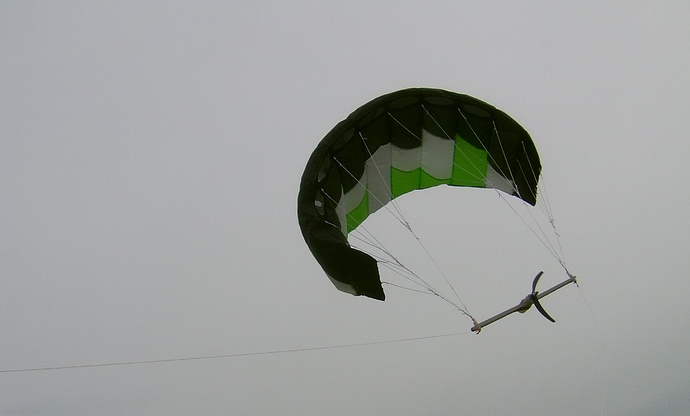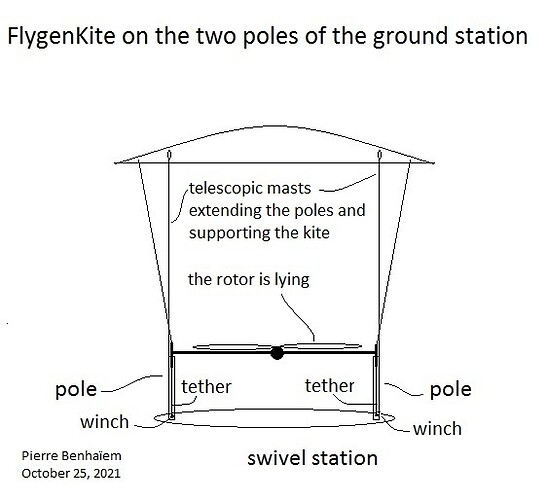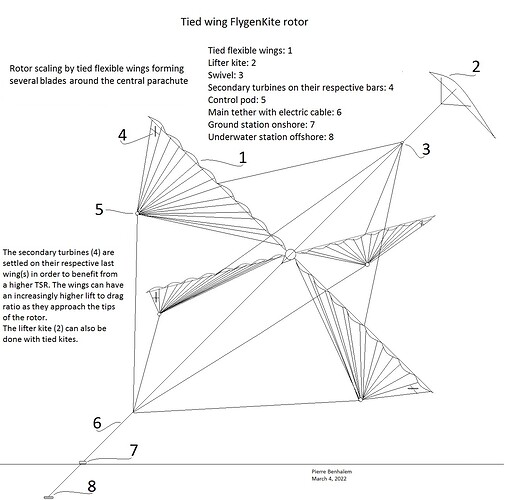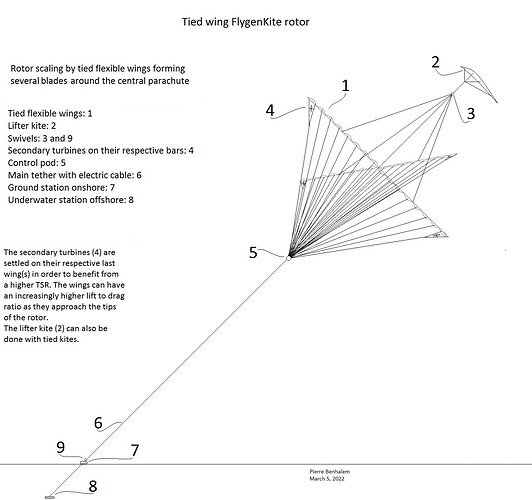FlygenKite is an old project comprising a flexible wing carrying at least one onboard turbine. It was presented in flight at AWEC2013 and in Kite Festival Dieppe 2012 , the generator feeding a lead tape as shown on the video below.
Some tests were also made with larger generators but without pushing them:
In the calculation the induction factor was neglected as for Loyd’s model. The rotor area should be larger to lead to a lesser induction factor.
Although the paper below indicates:
https://s3-eu-west-1.amazonaws.com/media.newore.catapult/app/uploads/2019/02/21165944/An-Introduction-to-Airborne-Wind-Stephanie-Mann-AP0020.pdf
On-Board Generation
On-board generation devices produce electricity by having added drag on the wing via rotor blades that generate continuously while flying in a crosswind motion (see Figure 3). In this case, the lift coefficient is enough to compensate for the device plus the added drag.The high lift-to-drag ratio requires a hard wing that results in increased performance when travelling across the wind. The power produced on-board is then transmitted down a cable connected to the ground.
I think a more careful study of flexible flygen could be useful, even if the observation above is confirmed. As for yoyo mode, a flexible wind should use about 10 times kite area to produce an equivalent power as a rigid kite. As an example the expected 600 kW for Makani M600 using a roughly 40 m² wing with a lift coefficient of 2, would be achieved by using a flexible 400 m² kite with a lift-to-drag ratio of 4. An advantage would be a slower flight, so a lower cut-in wind speed. The relatively slow flight could also lead to a better maximization of the space, above all when more scalability can be reached.
Some improvement of the way to fix the module was and is studied and several options are envisaged.



